Hyundai Tucson vs Land Rover Range Rover Velar – Which one offers the better deal?
Two cars, one duel: Hyundai Tucson meets Land Rover Range Rover Velar.
Which one wins in performance, efficiency and value for money? Find out now!
Costs and Efficiency:
Price and efficiency are often the first things buyers look at. Here it becomes clear which model has the long-term edge – whether at the pump, the plug, or in purchase price.
Hyundai Tucson has a clearly advantage in terms of price – it starts at 30600 £, while the Land Rover Range Rover Velar costs 61900 £. That’s a price difference of around 31251 £.
Fuel consumption also shows a difference: Hyundai Tucson manages with 1 L and is therefore clearly more efficient than the Land Rover Range Rover Velar with 4.80 L. The difference is about 3.80 L per 100 km.
As for range, the Hyundai Tucson performs slight better – achieving up to 70 km, about 7 km more than the Land Rover Range Rover Velar.
Engine and Performance:
Power, torque and acceleration say a lot about how a car feels on the road. This is where you see which model delivers more driving dynamics.
When it comes to engine power, the Land Rover Range Rover Velar has a evident edge – offering 404 HP compared to 252 HP. That’s roughly 152 HP more horsepower.
In acceleration from 0 to 100 km/h, the Land Rover Range Rover Velar is convincingly quicker – completing the sprint in 5.40 s, while the Hyundai Tucson takes 7.90 s. That’s about 2.50 s faster.
In terms of top speed, the Land Rover Range Rover Velar performs noticeable better – reaching 250 km/h, while the Hyundai Tucson tops out at 194 km/h. The difference is around 56 km/h.
There’s also a difference in torque: Land Rover Range Rover Velar pulls clearly stronger with 650 Nm compared to 367 Nm. That’s about 283 Nm difference.
Space and Everyday Use:
Cabin size, boot volume and payload all play a role in everyday practicality. Here, comfort and flexibility make the difference.
Both vehicles offer seating for 5 people.
In curb weight, Hyundai Tucson is evident lighter – 1520 kg compared to 2003 kg. The difference is around 483 kg.
In terms of boot space, the Hyundai Tucson offers a bit more room – 620 L compared to 552 L. That’s a difference of about 68 L.
In maximum load capacity, the Hyundai Tucson performs clearly perceptible better – up to 1799 L, which is about 441 L more than the Land Rover Range Rover Velar.
When it comes to payload, Land Rover Range Rover Velar hardly perceptible takes the win – 587 kg compared to 545 kg. That’s a difference of about 42 kg.
Who comes out on top?
Overall, the Hyundai Tucson shows itself to be dominates this comparison and secures the title of DriveDuel Champion.
It convinces with the more balanced overall package and proves to be the more versatile choice for everyday use.
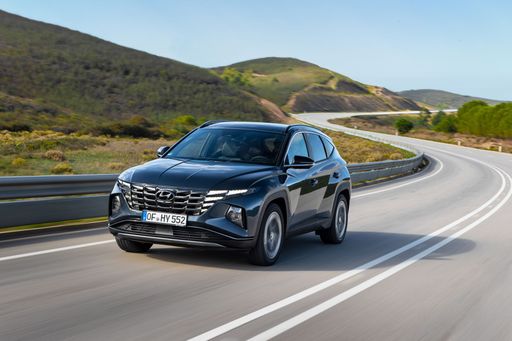
Hyundai Tucson
Hyundai Tucson
The Hyundai Tucson is a standout choice in the compact SUV segment, offering a perfect blend of style, comfort, and practicality. Its modern design is complemented by a spacious interior that provides ample room for passengers and luggage alike. With advanced technology and safety features, the Tucson ensures a smooth and enjoyable driving experience.
details @ hyundai.news
@ hyundai.news
 @ hyundai.news
@ hyundai.news
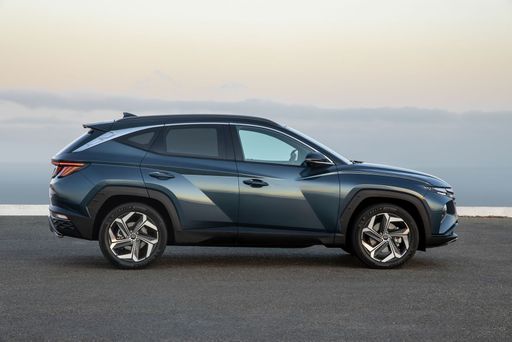 @ hyundai.news
@ hyundai.news
 @ hyundai.news
@ hyundai.news
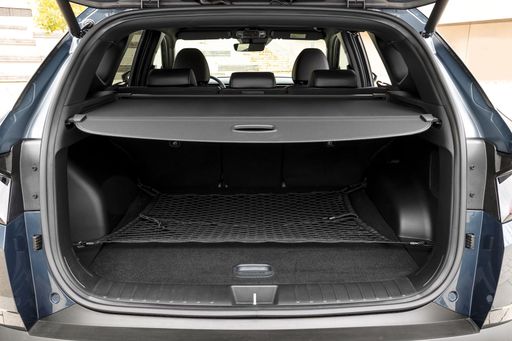 @ hyundai.news
@ hyundai.news
Land Rover Range Rover Velar
The Land Rover Range Rover Velar exemplifies a harmonious blend of elegance and capability, capturing the essence of modern luxury SUVs. Its sleek silhouette and refined design details make it stand out on both urban roads and off-road adventures. Inside, the Velar offers an impeccably crafted interior, combining premium materials with cutting-edge technology for a sophisticated driving experience.
details @ media.landrover.com
@ media.landrover.com
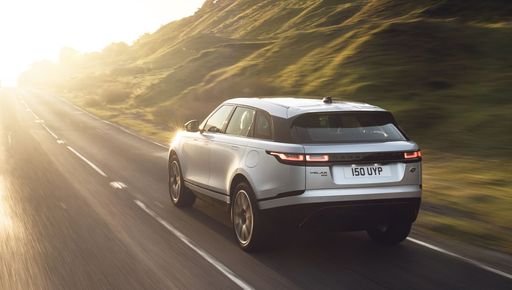 @ media.landrover.com
@ media.landrover.com
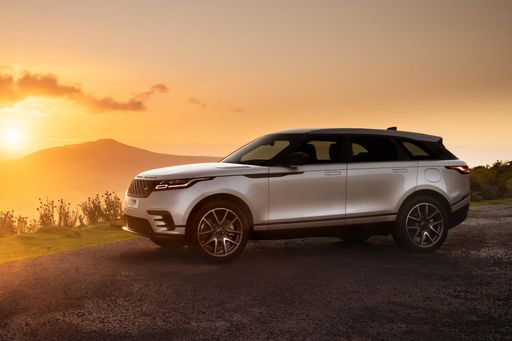 @ media.landrover.com
@ media.landrover.com
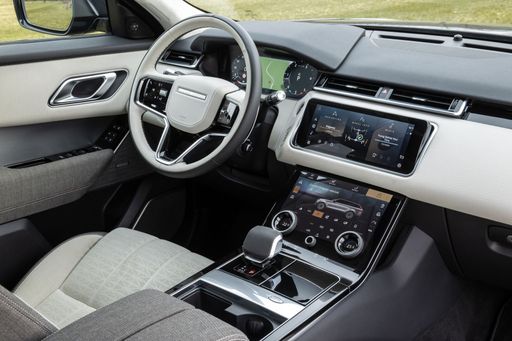 @ media.landrover.com
@ media.landrover.com

|

|
|
|
|
Costs and Consumption |
|
|---|---|
|
Price
30600 - 46300 £
|
Price
61900 - 87400 £
|
|
Consumption L/100km
1 - 6.9 L
|
Consumption L/100km
4.8 - 10.2 L
|
|
Consumption kWh/100km
-
|
Consumption kWh/100km
-
|
|
Electric Range
64 - 70 km
|
Electric Range
63 km
|
|
Battery Capacity
-
|
Battery Capacity
15.40 kWh
|
|
co2
22 - 156 g/km
|
co2
110 - 232 g/km
|
|
Fuel tank capacity
42 - 54 L
|
Fuel tank capacity
62 - 83 L
|
Dimensions and Body |
|
|---|---|
|
Body Type
SUV
|
Body Type
SUV
|
|
Seats
5
|
Seats
5
|
|
Doors
5
|
Doors
5
|
|
Curb weight
1520 - 1889 kg
|
Curb weight
2003 - 2280 kg
|
|
Trunk capacity
546 - 620 L
|
Trunk capacity
503 - 552 L
|
|
Length
4510 - 4520 mm
|
Length
4797 mm
|
|
Width
1865 mm
|
Width
1933 mm
|
|
Height
1650 mm
|
Height
1657 - 1665 mm
|
|
Max trunk capacity
1721 - 1799 L
|
Max trunk capacity
1335 - 1358 L
|
|
Payload
525 - 545 kg
|
Payload
460 - 587 kg
|
Engine and Performance |
|
|---|---|
|
Engine Type
Diesel MHEV, Petrol MHEV, Petrol, Full Hybrid, Plugin Hybrid
|
Engine Type
Petrol MHEV, Plugin Hybrid, Diesel MHEV
|
|
Transmission
Automatic, Manuel
|
Transmission
Automatic
|
|
Transmission Detail
Dual-Clutch Automatic, Manual Gearbox, Automatic Gearbox
|
Transmission Detail
Automatic Gearbox
|
|
Drive Type
Front-Wheel Drive, All-Wheel Drive
|
Drive Type
All-Wheel Drive
|
|
Power HP
136 - 252 HP
|
Power HP
204 - 404 HP
|
|
Acceleration 0-100km/h
7.9 - 11.6 s
|
Acceleration 0-100km/h
5.4 - 8.3 s
|
|
Max Speed
180 - 194 km/h
|
Max Speed
209 - 250 km/h
|
|
Torque
265 - 367 Nm
|
Torque
430 - 650 Nm
|
|
Number of Cylinders
4
|
Number of Cylinders
4 - 6
|
|
Power kW
100 - 185 kW
|
Power kW
150 - 297 kW
|
|
Engine capacity
1598 cm3
|
Engine capacity
1997 - 2997 cm3
|
General |
|
|---|---|
|
Model Year
2024
|
Model Year
2025
|
|
CO2 Efficiency Class
E, F, D, B
|
CO2 Efficiency Class
G, C
|
|
Brand
Hyundai
|
Brand
Land Rover
|
What drive types are available for the Hyundai Tucson?
Available configurations include Front-Wheel Drive or All-Wheel Drive.
The prices and data displayed are estimates based on German list prices and may vary by country. This information is not legally binding.
